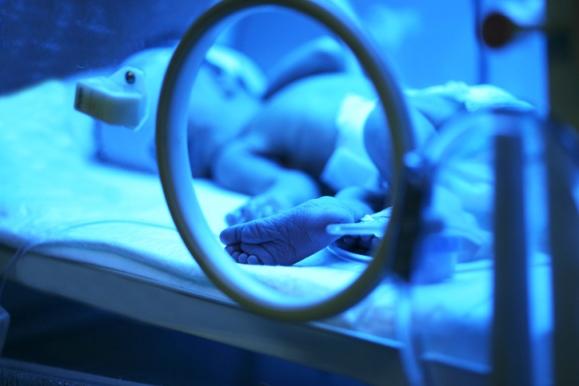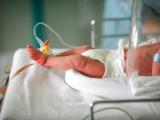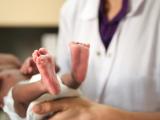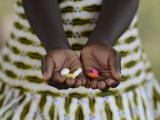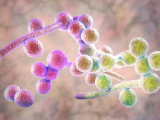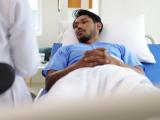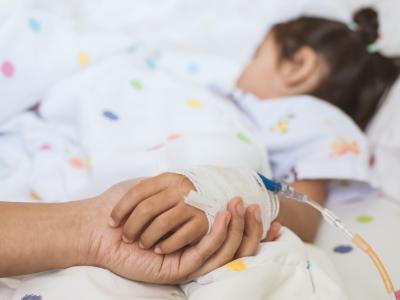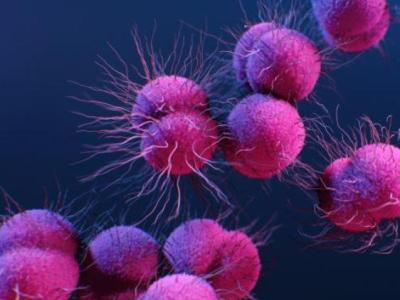A 6-week-old girl with leukemia and a severe blood infection has given researchers new insight into a mutation that helps bacteria fight antibiotics.
In a case reported yesterday in the journal mBio, researchers from St. Jude Children's Hospital in Memphis, Tenn., describe an infection acquired by the infant while she was undergoing treatment for acute myeloid leukemia, the second most common form of leukemia in children. After chemotherapy had wiped out her infection-fighting white blood cells, the girl developed a persistent, serious bloodstream infection. Although not an uncommon occurrence in immunocompromised patients, the situation was dire.
"She was in and out of the intensive care unit during this time," said co-author Joshua Wolf, MBBS, one of the St. Jude physicians who treated the girl. "She was very, very ill."
Doctors initiated antibiotic therapy, using the antibiotics vancomycin and meropenem, but to no effect. That's because the infection, the researchers found after taking blood cultures, was caused by vancomycin-resistant Enterococcus faecium (VRE), a "superbug" that can be difficult to eliminate.
Wolf said they knew they were dealing with a difficult infection right from the outset, given the girl's immunocompromised state and how difficult VRE can be to treat. "Everything was already stacked against this kid," he told CIDRAP News.
The physicians then moved to other first-line options, treating the girl's infection with the antibiotic agents linezolid, daptomycin, gentamycin, and quinupristin-dalfopristin.
Under normal circumstances, these drugs should have cleared the VRE infection. But they didn't, even though in vitro testing indicated the bacterial strain was susceptible to the antibiotics being deployed. The team then gave her a transfusion of donor white cells, Wolf explained, with the hope of giving her body some ability to kill the bacteria.
The girl ultimately recovered after 28 days and completed cancer treatment, but the infection did not fully resolve until her immune system had recovered.
Mutation "primes the pump" for resistance
What was behind this severe infection?
That's what Wolf and his colleagues wanted to know. To get a better understanding of the infection, they asked the family, after the girl had recovered, if they could do further research on the bacteria.
Genetic sequencing of 22 of the VRE isolates revealed several mutations in single isolates, but one in the relA gene was found in several isolates. This mutation, it turns out, plays a critical role in helping bacteria withstand antibiotics by inappropriately activating what is known as the stringent response, a defense mechanism that turns on in the face of adverse conditions—such as nutrient stress or antibiotic stress. Turning on the stringent response results in elevated levels of the signaling molecule alarmone.
"Basically, this mutation got the bacteria ready and primed the pump for them to resist any antibiotic that was thrown at them," said co-author Jason Rosch, PhD, assistant member of the St. Jude Department of Infectious Disease.
Further investigation suggested that the mutation appeared early on in the infection and became more prevalent over the course of the antibiotic therapy, particularly once daptomycin was introduced.
But it wasn't just the relA mutation that was making the infection difficult to treat. While the isolates grown in a liquid culture in the clinical lab showed antibiotic susceptibility, Rosch and his colleagues found that when they grew the mutated VRE strain in biofilms, which are complex communities of bacteria, it was able to tolerate even higher doses of antibiotics.
"When bacteria exist as a biofilm, they are inherently more resistant, but this mutation conferred even more resistance in the biofilm state, making it almost impossible to eradicate," Rosch explained.
They now believe the infection was related to a biofilm that had developed on the surface of the central venous catheter that was delivering the chemotherapy drugs. That biofilm enabled the mutated VRE strain to respond faster to antibiotic stress.
And even though the mutant VRE bacteria should have been less likely to survive and compete with non-resistant bacteria, the girl's compromised immune system provided the bacteria with a "permissive environment" for replication, Wolf and Rosch write in the study. In other words, the bacteria didn't have as many enemies to fight as they would in a host with a healthy immune system. The result, they write, was a "perfect storm" for the development of antibiotic resistance.
Genetic sequencing and potential therapies
Rosch said this is the first time that this mutation has been observed in Enterococcus, which is a concern because VRE are already inherently difficult to treat, with limited options available. Similar mutations have been observed in Staphylococcus infections.
Wolf said the one of the major takeaways of the study is that immunocompromised hosts may be an "important breeding ground" for these resistant bacteria, and that healthcare providers need to monitor infections and colonization in patients who have weakened immune systems. He also said the findings show how important genetic sequencing is for identifying novel mechanism of antibiotic avoidance.
"This type of approach is going to become increasingly common as a research tool, and potentially, even as a diagnostic tool," he said.
The study also hints at a potential therapeutic option, as the researchers reported that an experimental antibiotic called ADEP-4 was able to eradicate biofilms of the mutated VRE strain in the lab, a finding that suggests the drug could be a potential future candidate for treating such infections.
See also:
Jan 3 mBio study
